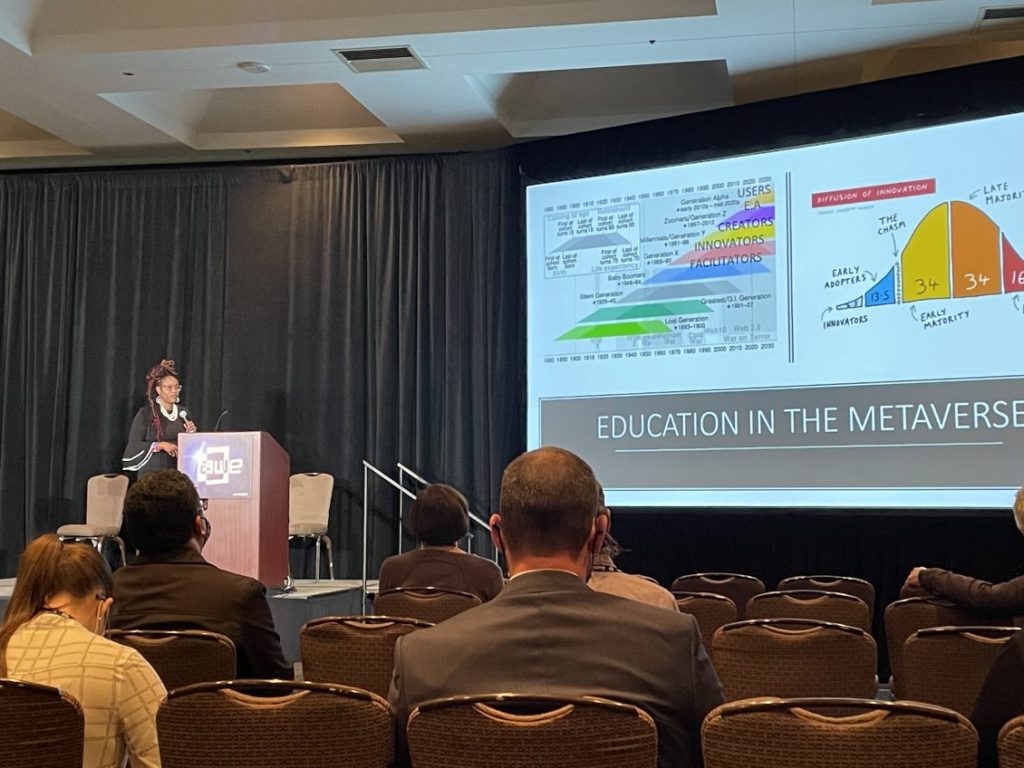
10 Dec AWE 2021 Wrap-up
Augmented World Expo (AWE) is the XR industry’s seminal, annual event showcasing the latest and greatest thought leaders, startups, and corporations pushing the limits of what’s possible within augmented reality and virtual reality. Since its inception in 2010, AWE has focused on fostering the mainstream adoption of extended reality and enabling immersive technology to become an integral part of our daily lives and professional workflows.
As usual, the twelfth annual Augmented World Expo began with an opening keynote presentation from AWE co-founder and CEO, Ori Inbar. After last year’s entirely virtual expo, AWE 2021 promised to provide the XR industry with a long-awaited opportunity to celebrate extended reality together in person once again. Inbar marked the occasion with an apt metaphor; by stepping onstage as Max Headroom, television’s first virtual reality host, he compared our present (remotely held events with virtual hosts) to the past’s eerily accurate imaginings of what was then the future—emphasizing how the XR industry has practically come full circle.
Eager for a closer look at what the three-day event had to offer, I asked Scott Burkey, the XR product manager at WestRock, and Annie Eaton, Futurus’ CEO, about their experiences at AWE and their opinions concerning the XR industry at large.
Industry Trends
Scott – The Rise of the Platform Developer
In recent years, it has seemed as though device manufacturers have been winning the race against software and platform developers. However, this is the first year where headset companies are starting to catch up; new head-mounted devices facilitating augmented and virtual reality experiences are entering the market. The Pico Neo 3 stands to take a serious bite out of a market dominated by Meta and their Oculus for Business options for the past few years.
Annie – AR Development Tools Abound
I was excited to meet some of my 8th Wall contacts in person. For years now, we have been using their platform to create AR experiences, so it was great to finally pair faces with the voices I’d only ever heard over the phone. I was impressed with all the latest advancements they have been making to Web AR—the tracking is becoming incredible! I also got to see an impressive Niantic Lightship demo, which is built on the 6D.ai platform they acquired in 2020. As a content producer, it’s promising to see that advancements in augmented reality are still heavily underway.

The Elephant in the Room
Scott – Scalability
From my perspective, the biggest elephant in the room preventing the widespread corporate adoption of XR solutions is their scalability. Now that the value of XR is proven, I talked with many other XR leaders from large enterprises about how we could scale extended reality. I loved hearing it said that “the group at your company that manages all of its phones, tablets, and laptops cannot be expected to incorporate device and content management for XR devices and solutions.” I agree—it’s unfair and unrealistic to expect that group to pick up the details of emerging technologies in most companies. It may not be 100% true for every large company, but it’s already proving valid within many companies, fueling the industry’s scalability conundrum.
Annie – Absence of Content Producers
AWE featured development engines, creator platforms, influencers, wearable devices, and hardware manufacturers, but there weren’t as many content producers present as I had hoped there would be. Adoption will be impossible without strong content that lures in the masses, so supporting content development by getting content producers in the same room with those managing XR’s infrastructure is important. Perhaps it’s not the elephant in the room that mattered most, but the elephant that was missing.
Favorite Hardware Demos


Industry Debates
Scott – Unreal vs. Unity
There’s still one debate that is far from being settled: whether Unreal or Unity will “win”—whatever that means. If I had to choose one, I would say that Unity will win. Not because it’s easier to learn or use, but because it seems to be the platform most developers are sticking to for large-scale software development. I’m sure this will incite a posse somewhere to start lighting their torches and come after me in the middle of the night, but it’s just my opinion.
Annie – Unreal vs. Unity
I agree with Scott’s biggest industry debate of Unreal vs. Unity. I have many friends who swear by Unreal and, for certain industries or content types, maybe that makes sense. But in a recent round of hiring, there were overwhelmingly more candidates with Unity experience over Unreal. Many of them were self-proclaimed “dabblers in Unreal” but professionally use Unity because it’s where the jobs are. The fact that this choice impacts people’s livelihood and career is enough indication to me of the direction that XR development is moving in.
Favorite Session
Annie – VR in Undergraduate Education: Pushing the Limits of Immersion Across Disciplines with Dr. Muhsinah Morris, Morehouse College
It was refreshing to hear from an educator local to Atlanta (bonus points!) who has constructed a curriculum leveraging VR for undergraduate education. She, alongside a group of professors, created content and courses for virtual reality classes with real data and results that exceeded expectations.

Scott – Engineering a New Role for AR/VR in the Post-Pandemic future with Elizabeth Baron, Ken Sobel, and Kenneth Wong
I felt that this conversation was natural and insightful. Plus, the three experts seemed very sharp and likable throughout the panel discussion.
Tech Review
Scott – Not Quite There Yet
Most devices showcased at AWE 2021 would require significant handholding before they could be properly incorporated within someone’s professional workflow. Though devices like the HoloLens 2 and RealWear have great potential, operating this technology in its current state is not quite as intuitive for new users as many of us had hoped.
Annie – Steps in the Right Direction
I didn’t get to try many tech demos, but I recognized many of the tech companies on display. Each of these companies has been improving their tech for years, so long-term investment in better tech is panning out. For example, AR glasses from various hardware providers had smaller, more fashionable frames than those of previous expos. All good signs that we’re moving towards something people will genuinely want to wear on the street.
I had the chance to demo the Mudra Band, a neural input wristband. A wearable that fits on the band of an Apple Watch is exciting—the smaller the hardware, the more likely the adoption.
Industry Shortcomings
Scott – Implementation
It was interesting to see so many companies at AWE that are using 360 experiences not just for marketing or tours for customers but for valuable and engaging training experiences. We are seeing this a lot in our company as well; fully immersive experiences can be an incredibly effective method for training new hires in machine nomenclature, troubleshooting, repairs, and setups. However, as enterprises begin to implement this promising technology, “Scott can do it best, so we should put it on his plate” cannot continue to be the standard solution for every obstacle encountered throughout this process. Those of us that have led the charge in our organizations must begin training others to complete the vast array of tasks necessary to implement XR within large enterprises.
Annie – Communication
I feel like communication between myself and the XR industry at large has been difficult. Yes, we all know who is who, see each other’s LinkedIn posts, and have an understanding of what’s happening at the surface level. However, I don’t typically have deeper industry-defining discussions with people outside my local network. Attending this conference provided valuable face time with people I wouldn’t have otherwise shared such powerful conversations with. This seems strange since many of us literally specialize in virtual worlds. So, I want to do a better job communicating with people from all over the world in this space. If we can’t do it, who can? Let’s set an example!
AWE 2021 provided patrons with meaningful opportunities to discuss and demo the future of immersive technology together in person, giving everyone lucky enough to attend a proper glimpse of what’s coming next to extended reality. Presentations like Dr. Morris’s prove that we’re only beginning to scratch the surface of VR possibilities within professional and educational settings. This year’s expo did well to address the ever-increasing mainstream appeal of XR, but there is still work to be done in making these tools as accessible and practical as possible.
We look forward to seeing the next year of industry research, development, and production culminate at Augmented World Expo 2022. Until then, let us know what you thought of this year’s expo by tagging us on Twitter: @TheFuturus




